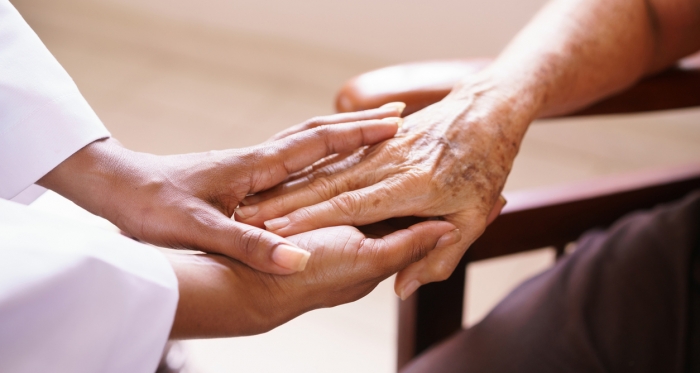by Tara Cousineau, PhD, author of The Kindness Cure
Kindness is love in action. That means intentionally and sincerely making kindness part of your daily life—even when you might not feel like it. You may find yourself grumpy or disillusioned, tired or sad, or any of the irritating emotional traps we can find ourselves in because we are human, after all. Authentic kindness is both natural and courageous because it requires us to connect with others. And this requires effort. Otherwise, you may feel stuck, lonely, or hardhearted over time. I often reflect on the writer George Saunders’s poignant advice to college graduates at Syracuse University (2013):
What I regret most in my life are failures of kindness. Those moments when another human being was there, in front of me, suffering, and I responded…sensibly. Reservedly. Mildly. Or, to look at it from the other end of the telescope: Who, in your life, do you remember most fondly, with the most undeniable feelings of warmth? Those who were kindest to you, I bet. It’s a little facile, maybe, and certainly hard to implement, but I’d say, as a goal in life, you could do worse than: Try to be kinder.
How about you? Are there ways you could try be a bit kinder to others? Or maybe to yourself? After all, kindness heals. It can also influence your outlook on life, strengthen social ties, and enhance your overall wellbeing.
Kindness is love in action.
Sometimes the simplest things are the hardest to do. But if you knew that kindness could change you on a deep biological level, would you practice it more? I encourage you to try daily doses of kindheartedness and see for yourself. Small intentional moments of kindness repeated over time fuels the neuroplasticity in your brain, or the ways your neural networks can strengthen in response to positive experiences as well as from the uplifting emotions that arise from them. Here are five ways you might reflect on or rekindle your own kindness:
1. Kindred Spirits.
Like George Saunders suggested, reflect on kindness over the course of your life. These could be moments when your kindness instinct caused you to override hesitation and show care or concern for the well-being of others. They could include times when you were on the receiving end of a kindness or when you witnessed someone else putting love into action. You could even include stories of kindness that you heard about that have stuck with you. Here are some prompts to help get you started:
I’ll never forget when ________ was kind to me…
When I think about kind people in the world, the list includes…
A time I stood up for kindness was…
2. Compassionate Listening.
The kindest thing we can do for one another is to give our full attention. This can be hard to do with the distractions of modern life. Next time you are in a conversation with someone, try to give undivided attention to what they are saying and be mindful of your own inner dialog getting in the way. When people are fully engaged in conversation, it deepens their human connection.
3. Creating a Kindness Plan.
Sometimes the person who needs our TLC most is our very own self. There are many reasons we neglect our own self-care. Start with one kind thing you can do every day to slowly shift the neural pattern in your brain toward positivity. Do this through intentionally engaging activities that are beneficial to you (and others) and create joy, serenity, pride, cheer and so on. Write this out in a journal or app notes, keeping it short so you can read it quickly. Read it regularly, as repetition is important. For example: I will make sure I smile today when I speak with people. Or, I will give myself 30 minutes to rest/read/play/connect with uplifting friends.
4. Self-Compassion Statements.
Psychologists Christopher Germer and Kristen Neff suggest creating self-compassion statements which are short mantras that feel right to you, and you can repeat in moments of silence, when uncomfortable reactions arise, or purposely take a self-compassion break during the day. For example: I love myself just the way I am. I’ve got this. I hold myself gently. Even if you can’t totally buy into such self-love you can trace around the edges or fake it ’til you make it: Even though I’m feeling anxious I can try to bring kindness to this moment. Or, I’m beginning to feel my heart open to my own care (and place your hand over your heart).
5. Gratitude Letter.
Write a letter to yourself once a week listing the things you’re grateful for in life.
The world lacks in kindness, and it means we all have work to do. How can we start tackling this problem? Ask how you can help. Be a mentor. Be a role model. Walk the talk. Step into another’s shoes. Put in joyful effort in the pursuit of kindness—even if it just means you feel good about the person you were today. Be sure to be specific about what you appreciate and why it matters to you.
 Tara Cousineau, PhD, is a clinical psychologist, researcher, and a parent of two teenage girls in Boston, MA. Her expertise spans child and adolescent health, women’s health, mind-body medicine, the science of happiness, and the use of innovative technologies to promote positive coping and wellbeing. She is the author of The Kindness Cure.
Tara Cousineau, PhD, is a clinical psychologist, researcher, and a parent of two teenage girls in Boston, MA. Her expertise spans child and adolescent health, women’s health, mind-body medicine, the science of happiness, and the use of innovative technologies to promote positive coping and wellbeing. She is the author of The Kindness Cure.


 2024 Peace Playbook: 3 Tactics to Avoid Clashes with Your Partner
2024 Peace Playbook: 3 Tactics to Avoid Clashes with Your Partner